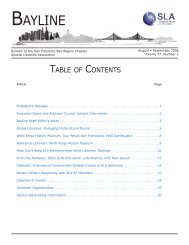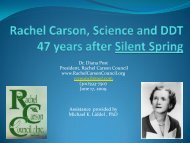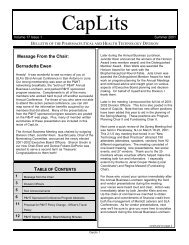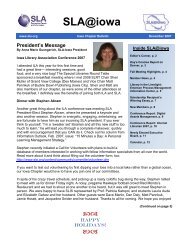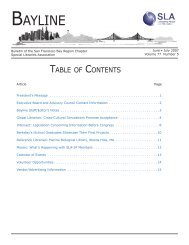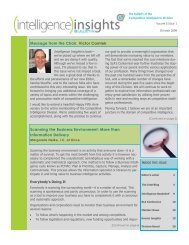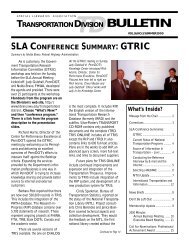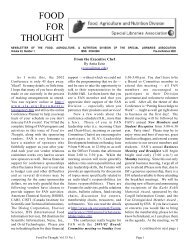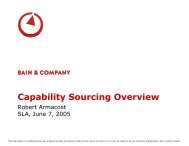Bernadette Ewen - units.sla.org - Special Libraries Association
Bernadette Ewen - units.sla.org - Special Libraries Association
Bernadette Ewen - units.sla.org - Special Libraries Association
You also want an ePaper? Increase the reach of your titles
YUMPU automatically turns print PDFs into web optimized ePapers that Google loves.
Text Mining: A New Frontier for Pharmaceutical Research<br />
Ronen Feldman<br />
ClearForest Corporation<br />
ronen@clearforest.com<br />
212-432-1515<br />
15 E 26 St., NY, NY, 10010<br />
ABSTRACT<br />
The information age has made it easy to store large amounts of data. The proliferation of documents available on<br />
the Web, on corporate intranets, on news wires, and elsewhere is overwhelming. However, while the amount of<br />
data available to us is constantly increasing, our ability to absorb and process this information remains constant.<br />
Search engines only exacerbate the problem by making more and more documents available in a matter of a few<br />
key strokes. Text Mining is a new and exciting research area that tries to solve the information overload problem by<br />
using techniques from data mining, machine learning, NLP, IR and knowledge management. Text Mining involves<br />
the preprocessing of document collections (text categorization, term extraction, and information extraction), the<br />
storage of the intermediate representations, the techniques to analyze these intermediate representations<br />
(distribution analysis, clustering, trend analysis, association rules etc.) and visualization of the results.<br />
2. Introduction<br />
Data Mining and Knowledge Discovery seek to turn the vast amounts of data available in digital format into useful<br />
knowledge. Classic Data Mining concentrates on structured data, stored in relational databases or in flat files.<br />
However, it is now clear that only a small portion of the available information is in structured format. It is<br />
estimated that up to 80% of the data available in digital format is non-structured data. Most notably, much of<br />
information is available in textual form, with little or no formatting. Hence the growing interest in Text Mining,<br />
which is the area within Data Mining that focuses on Data Mining from textual sources.<br />
The first issue to address when performing Text Mining is to determine the underlying information on which the<br />
Data Mining operations are applied. Our approach to text mining is based on extracting meaningful concepts that<br />
annotate the documents. A typical text mining system begins with collections of raw documents, without any labels<br />
or tags. Documents are first automatically labeled by categories, terms or entities extracted directly from the<br />
documents. Next, the concepts and additional higher-level entities (that are <strong>org</strong>anized in a hierarchical taxonomy)<br />
are used to support a range of KDD operations on the documents. The frequency of co-occurrence of concepts can<br />
provide the foundation for a wide range of KDD operations on collections of textual documents, such as finding<br />
sets of documents whose concept distributions differ significantly from that of the full collection, other related<br />
collections, or collections from other points in time.<br />
A straightforward approach is to use the entire set of words in the documents as inputs to the Data Mining<br />
algorithms. However, as was shown by Rajman and Besançon ([6]), the results of the mining process in this<br />
approach are often rediscoveries of compound nouns (such as that “Wall” and “Street” or that “Ronald” and<br />
“Reagan” often co-occur), or of patterns that are at too low a level to be significant (such as that “shares” and<br />
“securities” co-occur).<br />
A second approach ([3][4]) is to use tags associated with the documents, and to perform the Data Mining operations<br />
on the tags. However, to be effective this requires:<br />
• Manual tagging - which is unfeasible for large collections; or<br />
• Automated tagging – using any one of the many automated categorization algorithms.<br />
This approach suffers from two drawbacks. First, the number of distinct categories that such algorithms can<br />
effectively handle is relatively small, thus limiting the broadness of the mining process. More importantly, the<br />
process of automated categorization requires defining the categories a priori, thus defeating the purpose of<br />
discovery within the actual text.<br />
CapLits 20



